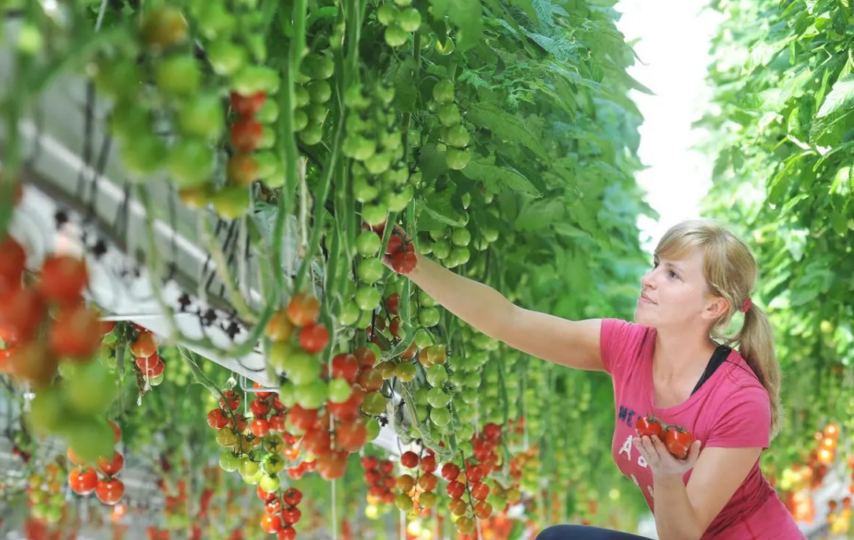Tomato farming emerges as a bright thread that binds together the fabric of agricultural sustenance and communal well-being in the core of rural settings, where the bounty of the earth is an integral part of daily life. Tomatoes, or Solanum lycopersicum as they are known in the scientific community, play an important role in regional agriculture and cuisine due to their vast array of hues, flavours, and health benefits. We will journey through the verdant fields of village tomato culture to learn about its significance, the flourishing expansion that fuels rural communities, and the essential elements that contribute to the crop’s success symphony. To learn more about organic tomato cultivation in India, please visit https://tomatomentor.com.
Importance Of Tomatoes In Local Agriculture And Diets
The soil’s gems, tomatoes are more than just vegetables; they decorate our meals and improve our quality of life. In rural areas where self-sufficiency is revered, tomatoes are especially valuable. Tomatoes improve the nutritional quality of regional cuisines since they are abundant in nutrients such as minerals, vitamins A and C, and antioxidants. The vibrant crimson, juicy orbs give curries, salads, and chutneys life and provide a sensory explosion of flavour and colour.
Tomatoes support regional economies in addition to their culinary appeal. In order to provide the villagers with a source of income during poorer seasons, the excess produce can be preserved as sauces, pastes, and pickles. Reduced rural-to-urban migration in pursuit of employment is made possible by this economic empowerment. In addition, the adaptability of tomatoes in a variety of cuisines helps to overcome cultural gaps by tying communities to a wider tapestry of gastronomic diversity.
Significance Of Robust Tomato Growth For Village Communities
The presence of healthy tomato plants is indicative of economic growth in rural regions since it guarantees locals a reliable source of revenue and food. Tomatoes, when grown vigorously, can boost community resilience by increasing output. The surplus output serves two purposes: it provides surplus for export and it provides supply for domestic use.
In rural areas, where agriculture is frequently deeply ingrained in the culture, tomatoes are a source of great pride. The peasants’ cooperation and unity is strengthened by the bounty of their tomato harvest. The social fabric is strengthened, and as a result more people are willing to work together and share knowledge.
An Overview of the Things That Affect How Well Tomatoes Grow
Successful tomato cultivation is akin to conducting a symphony; every element must harmonise to produce melodious results. Farmers desiring a bountiful tomato harvest must comprehend the interplay of a number of variables if they hope to reap a bountiful crop.
Climate and Soil: Tomatoes flourish in temperate climates with ample sunlight and moderate rainfall. Well-drained, loamy soil enriched with organic matter creates an optimal environment for their growth.
Seed Selection: The choice of tomato variety lays the foundation for success. Determinate varieties are ideal for smaller spaces, while indeterminate varieties offer continuous yields but require more space.
Planting and Spacing: Proper spacing between plants allows for adequate air circulation, reducing the risk of diseases. Transplants should be set in the soil after the threat of frost has passed.
Water Management: Consistent and adequate watering is crucial, especially during flowering and fruiting stages. Drip irrigation systems minimise water wastage and discourage foliage diseases.
Pest and Disease Management: Regular monitoring for pests like aphids, caterpillars, and diseases like blight is essential. Organic pest control methods and early intervention mitigate potential damage.
Nutrient Balance: Tomatoes are heavy feeders, requiring a balanced supply of nutrients. The fertility of the soil can be increased by the use of compost and organic fertilisers, which in turn results in plants that are in better health and fruits that are fuller.
Seed Selection And Quality
In the intricate tapestry of tomato cultivation, the foundation of success is woven with the threads of meticulous seed selection and unwavering seed quality. As village farmers set out to sow the seeds of their dreams, understanding the nuances of this crucial aspect becomes paramount. From choosing the right tomato varieties tailored to village conditions to embracing disease-resistant cultivars, and from sourcing authentic seeds to enhancing germination, let’s explore the facets that compose the art of seed selection.
Choosing Appropriate Tomato Varieties For Village Conditions
Every single one of the kaleidoscope of tomato types has its own special appeal and capacity for change. When planning a harvest, it is important to choose kinds that are compatible with the climate and soil of the area. This can make all the difference in the world. This decision-making process ought to be guided by elements such as climate, the kind of soil, and accessible space.
For smaller spaces, determinate varieties that exhibit controlled growth might be suitable, while larger expanses could accommodate the sprawling tendencies of indeterminate varieties. Climate resilience, early maturation, and compatibility with local culinary preferences should also be considered when choosing appropriate varieties.
Importance Of Disease-Resistant And Adaptive Cultivars
Farmers can improve their chances of a successful tomato harvest by limiting the spread of disease and pests. It is especially crucial to have access to disease-resistant and adaptive tomato cultivars in rural areas where extensive pest management is not possible owing to a lack of financing. Super plants resistant to common plant diseases like blight and wilt have been the result of years of painstaking breeding.
Investing in disease-resistant cultivars increases the odds of success by decreasing the use of chemical interventions and increasing the use of sustainable and organic methods. Developed to do well in a variety of climates, these cultivars can be used as a safety net to shield farmers from the effects of unforeseen weather fluctuations.
Seed Sourcing And Avoiding Counterfeit Seeds
The first step in growing a healthy tomato plant from a tiny seed is locating genuine, high-quality seeds. Thanks to the Internet and its wealth of resources, today’s farmers may easily find reliable seed companies online. To avoid buying fake or low-quality seeds, it’s important to always buy from reputable retailers.
Farmers can get advice on where to find good seeds from organizations like local agricultural extension agencies, government-approved seed banks, and trustworthy agricultural cooperatives. To find reliable seed sources, it is helpful to work with other farmers who have grown the desired tomato varieties successfully.
Seed Treatment and Germination Improvement
Planting seeds in soil is only the first step in developing healthy, robust seedlings. Enhancing germination and treating seeds are crucial elements in this intricate procedure. Seeds can be treated with soaking, scarification, or stratification prior to planting to induce germination and ensure uniform germination.
Furthermore, regulated conditions, like greenhouses or seedling trays, can improve germination rates. These practices shield seedlings from damaging elements and pests during their formative phases, increasing the likelihood that they will mature into robust plants.
Conclusion
Growing healthy tomatoes in the rustic setting of a village landscape requires more than just hard work; it also requires a synergistic partnership between human knowledge and the earth’s nurturing forces. We are reminded of this precarious equilibrium when we wrap up our investigation into the conditions that foster the robust growth of tomatoes in rural areas.
The essence of successful tomato cultivation lies in understanding the symphony of interconnected elements that contribute to the grand finale of a bountiful harvest. From the fertile soil that cradles the roots to the caress of sunlight that fuels growth, and from the careful selection of varieties that resonate with local conditions to the resilience against pests and diseases, each factor plays a distinct role in the tale of these vibrant red treasures.








